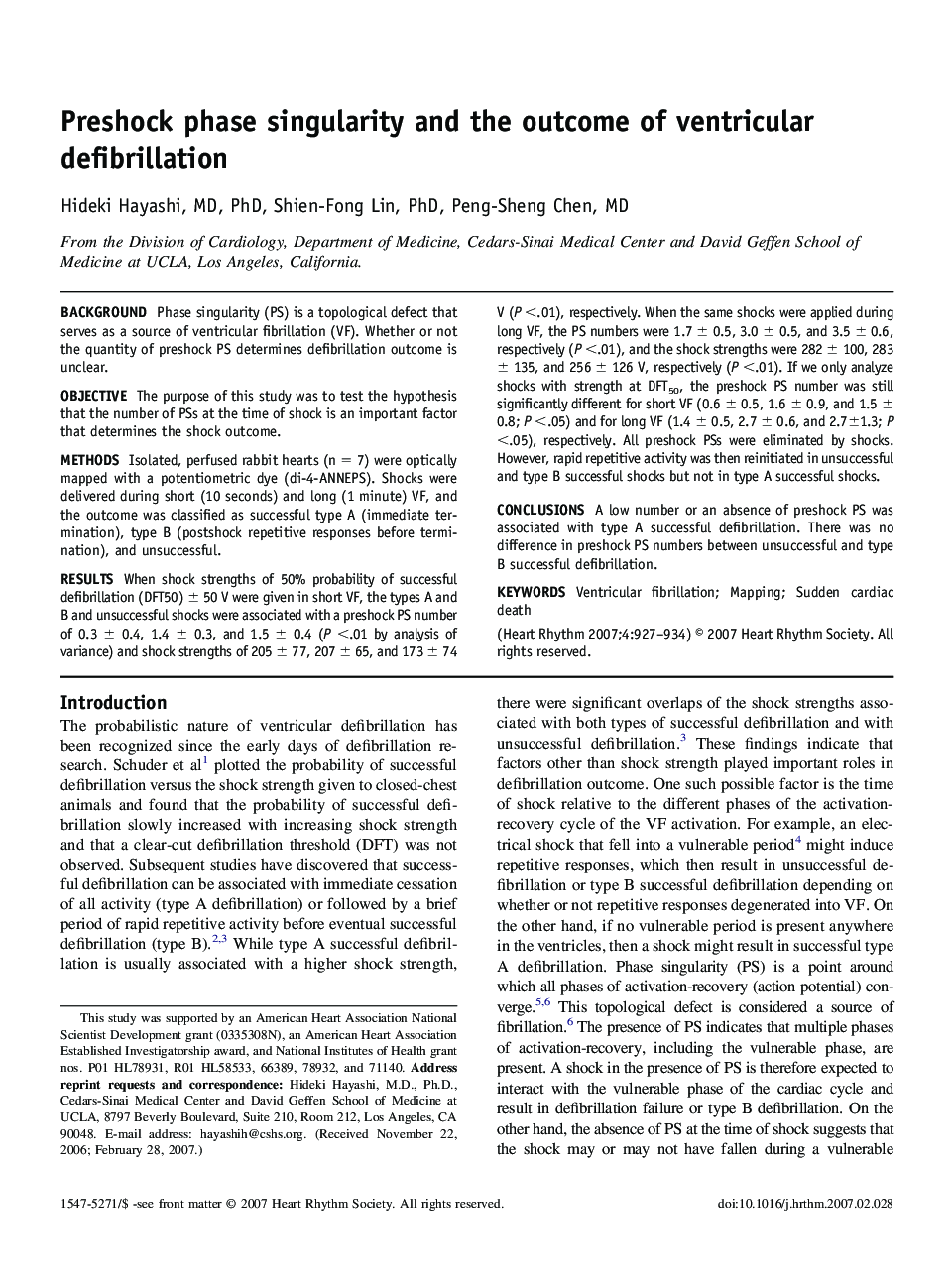| کد مقاله | کد نشریه | سال انتشار | مقاله انگلیسی | نسخه تمام متن |
|---|---|---|---|---|
| 2924680 | 1175914 | 2007 | 8 صفحه PDF | دانلود رایگان |

BackgroundPhase singularity (PS) is a topological defect that serves as a source of ventricular fibrillation (VF). Whether or not the quantity of preshock PS determines defibrillation outcome is unclear.ObjectiveThe purpose of this study was to test the hypothesis that the number of PSs at the time of shock is an important factor that determines the shock outcome.MethodsIsolated, perfused rabbit hearts (n = 7) were optically mapped with a potentiometric dye (di-4-ANNEPS). Shocks were delivered during short (10 seconds) and long (1 minute) VF, and the outcome was classified as successful type A (immediate termination), type B (postshock repetitive responses before termination), and unsuccessful.ResultsWhen shock strengths of 50% probability of successful defibrillation (DFT50) ± 50 V were given in short VF, the types A and B and unsuccessful shocks were associated with a preshock PS number of 0.3 ± 0.4, 1.4 ± 0.3, and 1.5 ± 0.4 (P <.01 by analysis of variance) and shock strengths of 205 ± 77, 207 ± 65, and 173 ± 74 V (P <.01), respectively. When the same shocks were applied during long VF, the PS numbers were 1.7 ± 0.5, 3.0 ± 0.5, and 3.5 ± 0.6, respectively (P <.01), and the shock strengths were 282 ± 100, 283 ± 135, and 256 ± 126 V, respectively (P <.01). If we only analyze shocks with strength at DFT50, the preshock PS number was still significantly different for short VF (0.6 ± 0.5, 1.6 ± 0.9, and 1.5 ± 0.8; P <.05) and for long VF (1.4 ± 0.5, 2.7 ± 0.6, and 2.7±1.3; P <.05), respectively. All preshock PSs were eliminated by shocks. However, rapid repetitive activity was then reinitiated in unsuccessful and type B successful shocks but not in type A successful shocks.ConclusionsA low number or an absence of preshock PS was associated with type A successful defibrillation. There was no difference in preshock PS numbers between unsuccessful and type B successful defibrillation.
Journal: Heart Rhythm - Volume 4, Issue 7, July 2007, Pages 927–934